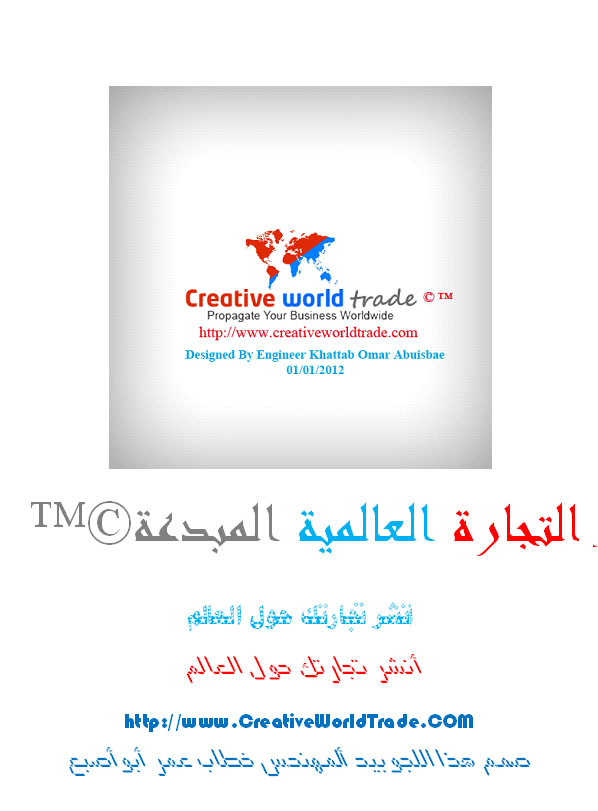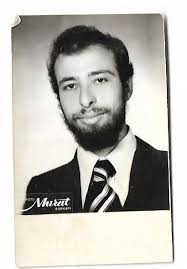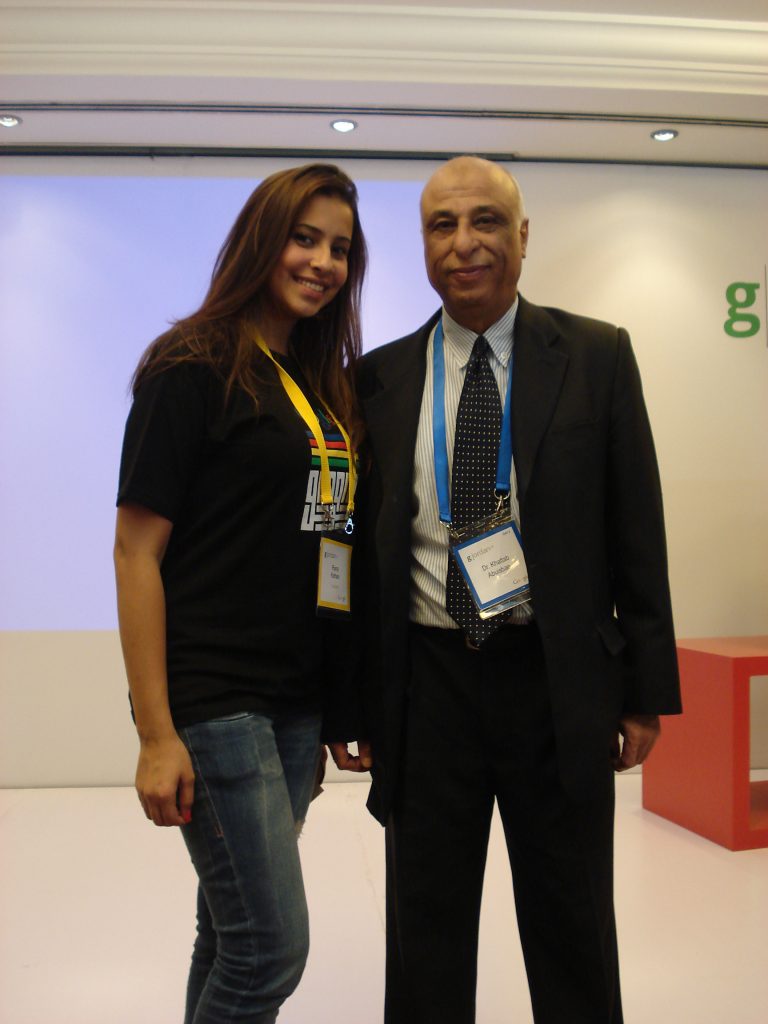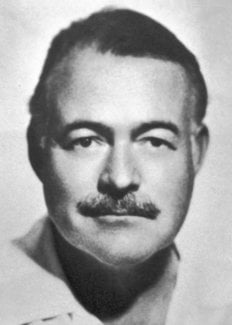










Letter by the Founder& Owner
27th April 2024

The Nobel Prize in Literature 1954
Ernest Hemingway
Biographical

Ernest Hemingway (1899-1961), born in Oak Park, Illinois, started his career as a writer in a newspaper office in Kansas City at the age of seventeen. After the United States entered the First World War, he joined a volunteer ambulance unit in the Italian army. Serving at the front, he was wounded, was decorated by the Italian Government, and spent considerable time in hospitals. After his return to the United States, he became a reporter for Canadian and American newspapers and was soon sent back to Europe to cover such events as the Greek Revolution.
During the twenties, Hemingway became a member of the group of expatriate Americans in Paris, which he described in his first important work, The Sun Also Rises (1926). Equally successful was A Farewell to Arms (1929), the study of an American ambulance officer’s disillusionment in the war and his role as a deserter. Hemingway used his experiences as a reporter during the civil war in Spain as the background for his most ambitious novel, For Whom the Bell Tolls (1940). Among his later works, the most outstanding is the short novel, The Old Man and the Sea (1952), the story of an old fisherman’s journey, his long and lonely struggle with a fish and the sea, and his victory in defeat.
Hemingway – himself a great sportsman – liked to portray soldiers, hunters, bullfighters – tough, at times primitive people whose courage and honesty are set against the brutal ways of modern society, and who in this confrontation lose hope and faith. His straightforward prose, his spare dialogue, and his predilection for understatement are particularly effective in his short stories, some of which are collected in Men Without Women (1927) and The Fifth Column and the First Forty-Nine Stories (1938). Hemingway died in Idaho in 1961.From Nobel Lectures, Literature 1901-1967, Editor Horst Frenz, Elsevier Publishing Company, Amsterdam, 1969
This autobiography/biography was written at the time of the award and first published in the book series Les Prix Nobel. It was later edited and republished in Nobel Lectures. To cite this document, always state the source as shown above.
| Selected Bibliography |
| Baker, Carlos. Hemingway: The Writer as Artist. Fourth edition, Princeton University Press: Princeton, NJ, 1972. |
| Bruccoli, Matthew J. (Ed.). Ernest Hemingway’s apprenticeship: Oak Park, 1916-1917. NCR Microcard Editions: Washington, D.C., 1971. |
| Bruccoli, Matthew J., and Robert W. Trogdon (Eds.). The Only Thing That Counts: The Ernest Hemingway-Maxwell Perkins Correspondence 1925-1947. Charles Scribner’s Sons: New York, 1996. |
| Clifford, Stephen P. Beyond the Heroic “I”: Reading Lawrence, Hemingway, and “masculinity”. Bucknell Univ. Press: Cranbury, NJ, 1999. |
| Hemingway, Ernest. By-Line: Ernest Hemingway. Selected articles and dispatches of four decades. Edited by William White, with commentaries by Philip Young. Collins: London, 1968. |
| – Complete poems. Edited with an introduction and notes by Nicholas Gerogiannis. Rev. ed., University of Nebraska Press: Lincoln, 1992. |
| – The Complete Short Stories. The Finca Vigía ed. Charles Scribner’s Sons: New York, 1998. |
| – Death in the Afternoon. Jonathan Cape: London, 1932. |
| – Ernest Hemingway: Selected Letters, 1917-1961. Ed. Carlos Baker. Charles Scribner’s Sons: New York, 1981. |
| – A Farewell to Arms. Charles Scribner’s Sons: New York, 1929. |
| – Fiesta. Jonathan Cape: London, 1927. |
| – For Whom the Bell Tolls. Charles Scribner’s Sons: New York 1940. |
| – The Garden of Eden. Charles Scribner’s Sons: New York, 1986. |
| – Green Hills of Africa. Charles Scribner’s Sons: New York 1935. |
| – In Our Time. Boni and Liveright: New York, 1925. |
| – Islands in the Stream. Charles Scribner’s Sons: New York, 1970. |
| – A Moveable Feast. Jonathan Cape: London, 1964. |
| – The Nick Adams Stories. Preface by Philip Young. Charles Scribner’s Sons: New York, 1972. |
| – The Old Man and the Sea. Charles Scribner’s Sons: New York, 1952. |
| – Selected Letters 1917-1961. Ed. Carlos Baker. Panther Books/Granada Publishing: London 1985(1981). |
| – The Snows of Kilimanjaro and other stories, Charles Scribner’s Sons: New York, 1961. |
| – The Sun also rises. Charles Scribner’s Sons: New York, 1928(1926). |
| – The Torrents of Spring: A Romantic Novel in Honor of the Passing of a Great Race. Charles Scribner’s Sons: New York, 1926. |
| – Three Stories & Ten Poems: Ernest Hemingway’s First Book. A facsimile of the original Paris Edition published in 1923. Bruccoli Clark Books: Bloomfield Hills, Michigan, 1977. |
| – True at First Light. Edited with an Introduction by Patrick Hemingway. Arrow Books/Random House: London 1999. |
| – Winner Take Nothing. Charles Scribner’s Sons: New York, 1933. |
| Josephs, Allen. For Whom the Bell Tolls: Ernest Hemingway’s Undiscovered Country. Twayne: New York, 1994. |
| Lacasse, Rodolphe. Hemingway et Malraux: destins de l’homme. Profils; 6, Montréal 1972. |
| Lynn. Kenneth S. Hemingway. Simon and Schuster: London, 1987. |
| Mandel, Miriam. Reading Hemingway: The Facts in the Fictions. Scarecrow Press: Metuchen, NJ and London, 1995. |
| Meyers, Jeffrey. Hemingway: A Biography. New York, 1985 (Macmillan: London, 1986 (Harper & Row: New York 1985). |
| Nelson, Gerald B. & Glory Jones. Hemingway: Life and Works. Facts On File Publications: New York, 1984. |
| Palin, Michael. Hemingway’s Travels. Weidenfeld & Nicolson: London, 1999. |
| Phillips, Larry W (Ed). Ernest Hemingway on Writing. Grafton Books: London, 1986 (1984). |
| Reynolds, Michael S. Hemingway: an Annotated Chronology: an Outline of the Author’s Life and Career Detailing Significant Events, Friendships, Travels, and Achievements. Omni chronology series, 1 Omnigraphics, Inc: Detroit, MI, 1991. |
| Reynolds, Michael S. Hemingway: The Final Years. W.W. Norton: New York 1999. |
| Reynolds, Michael S. Hemingway: the Homecoming. W.W. Norton: New York, 1999. |
| Reynolds, Michael S. Hemingway: the Paris years. W.W. Norton: New York 1999. |
| Reynolds, Michael S. The Young Hemingway. W.W. Norton: New York, 1998. |
| Reynolds, Michael S. Hemingway’s First War: The Making of A Farewell to Arms. Basil Blackwell: New York and Oxford, 1987 (Princeton U.P. 1976). |
| Trogdon, Robert W. (Ed.). Ernest Hemingway: A Documentary Volume. In: Dictionary of Literary Biography (series) Vol. 210. Gale Research Inc.: Detroit, Michigan, 1999. |
| Wagner-Martin, Linda (Ed.). A Historical Guide to Ernest Hemingway. Oxford University Press: New York and Oxford, 2000 |
| The John F. Kennedy Library in Boston, Massachusetts, has an extensive collection of books and manuscripts, and holds more than 10,000 photos of Ernest Hemingway. |
Ernest Hemingway died on July 2, 1961.Copyright © The Nobel Foundation 1954
To cite this section
MLA style: Ernest Hemingway – Biographical. NobelPrize.org. Nobel Media AB 2019. Wed. 23 Oct 2019. <https://www.nobelprize.org/prizes/literature/1954/hemingway/biographical/>Back to top
Learn more
Nobel Prizes 2019
Fifteen laureates have been awarded this year, for achievements that have conferred the greatest benefit to humankind.
Their work and discoveries range from how cells adapt to changes in levels of oxygen to our ability to fight global poverty.
Explore prizes and laureates
Look for popular awards and laureates in different fields, and discover the history of the Nobel Prize.Select the category or categories you would like to filter byPhysicsChemistryMedicineLiteraturePeaceEconomic SciencesDecrease the year by one-Choose a year you would like to search inIncrease the year by one+Explore
The Nobel Prize in Literature 1954
Ernest Hemingway
Facts

Photo from the Nobel Foundation archive.
Ernest Miller Hemingway
The Nobel Prize in Literature 1954
Born: 21 July 1899, Oak Park, IL, USA
Died: 2 July 1961, Ketchum, ID, USA
Residence at the time of the award: USA
Prize motivation: “for his mastery of the art of narrative, most recently demonstrated in The Old Man and the Sea, and for the influence that he has exerted on contemporary style.”
Language: English
Prize share: 1/1
To cite this section
MLA style: Ernest Hemingway – Facts. NobelPrize.org. Nobel Media AB 2019. Wed. 23 Oct 2019. <https://www.nobelprize.org/prizes/literature/1954/hemingway/facts/>Back to top
